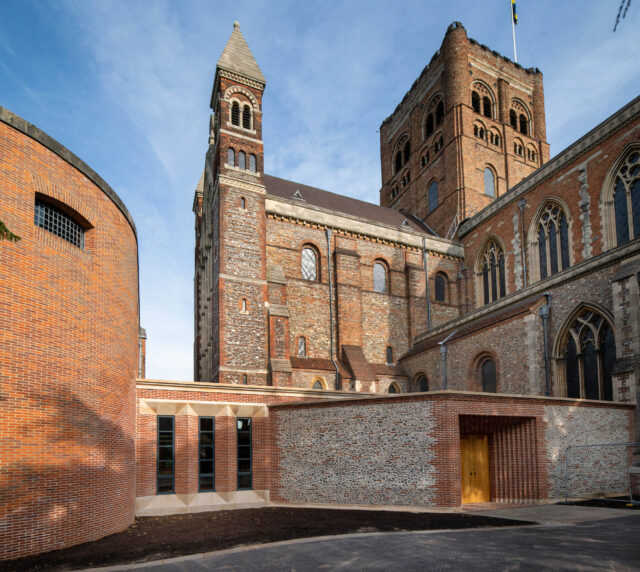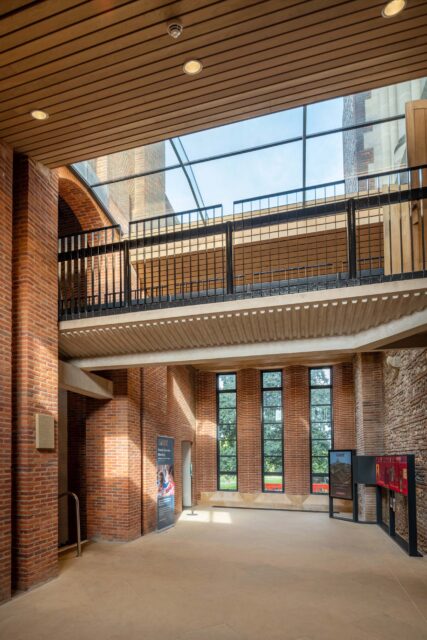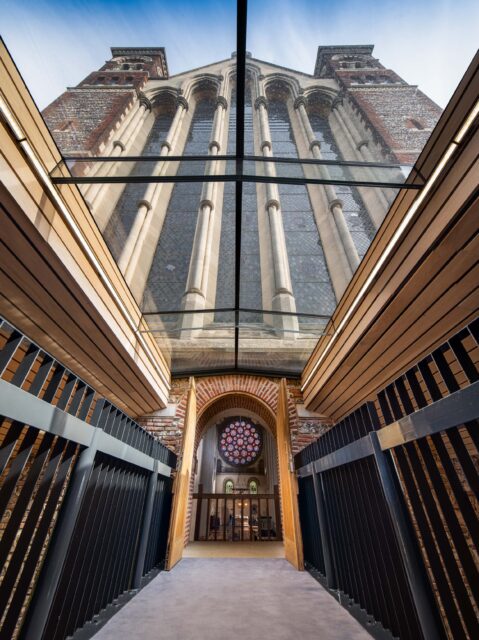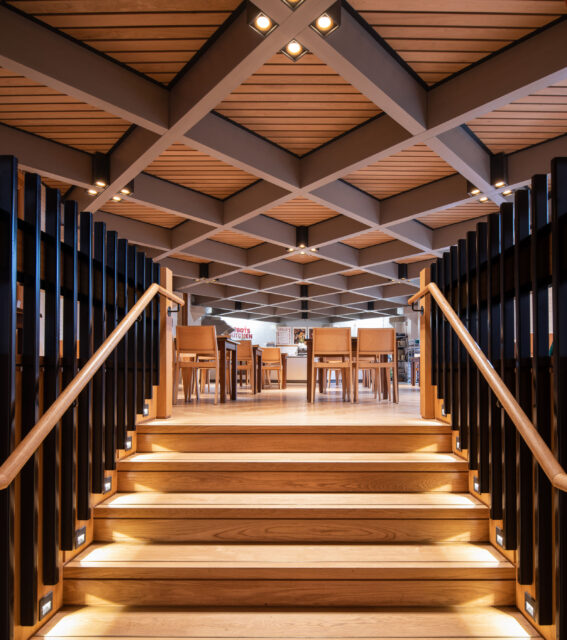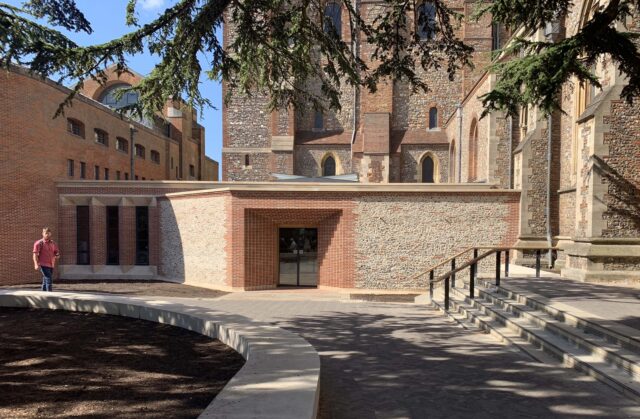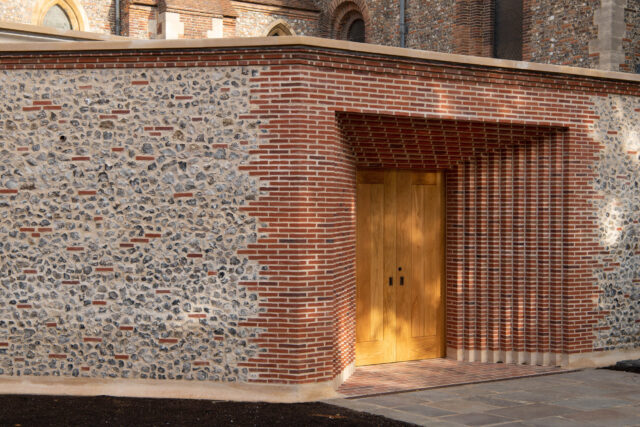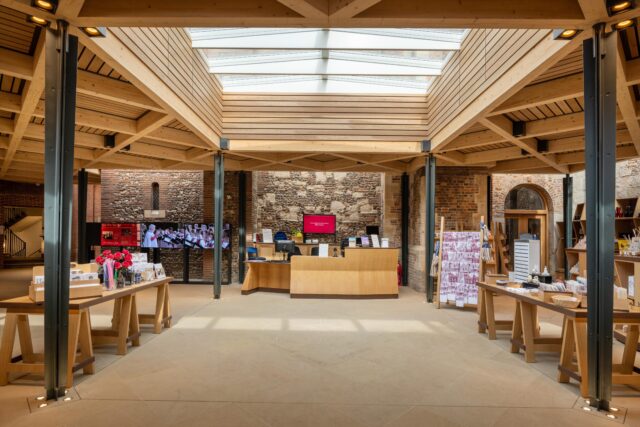Catriona O’Neill
Category
Young Architect of the Year
Summary
Reason for nomination
Catriona has worked for Simpson & Brown for seven years during which time she completed her architectural training before going on to become an Associate in the practice. She has been the job architect for a number of projects, by far the most high-profile and challenging being the creation of a new Welcome and Learning Centre at St Albans Cathedral. For such a young and newly qualified architect the prospect of being the lead designer and job runner for such a prestigious project on such a sensitive site for such an illustrious client must have been a daunting one. It was, however, one that she tackled head on with great skill, judgement and tact throughout a prolonged design and construction period. During the design stages there were numerous obstacles to overcome including fierce opposition from the Local Authority to any building at all on the selected site. She also had to juggle with the often conflicting demands of a multi-faceted client body, multiple funders and a variety of stakeholders with disparate objectives, including numerous statutory bodies and specialist interest groups. Throughout the construction period she remained admirably professional under pressure, especially when under great scrutiny, given the historical and cultural significance of the cathedral site. The contractual work threw up a host of problems, including the intense archaeological operations that had to be woven into the programme and the constructional challenges of working within a confined site between the historic cathedral and the modern chapter house. Her close and collaborative working relationship with the site agent proved to be an invaluable asset in overcoming what sometimes seemed like insuperable difficulties. Her pragmatic and flexible way of thinking, her willingness to explore alternative design solutions, and her readiness to engage proactively in problem-solving have all been instrumental in the ultimate success of the completed building. As the job architect Catriona faced many challenges throughout the entire project, but in dealing with them in such a professional , engaging and equanimeous manner she gained the unequivocal support and deep respect of the both the client and the contractor in equal measure – not an easy task in the sometimes adversarial world of construction politics. The completed building, which has been received with great enthusiasm by the local community, is testament to her skills – and reinforces the reason why Simpson & Brown have nominated her for the award of ‘Young Architect of the Year’.
Description of work
The ‘Alban, Britain’s First Saint’ NLHF-supported project at St Albans Cathedral called for a new Welcome and Learning Centre to be created by connecting the Grade I listed Cathedral to its Chapter House building, built in the early 1980s to a design by Sir William Whitfield. This provides much-needed additional accommodation and upgraded facilities designed to support the varying needs of the Cathedral congregation, education groups, visitors and staff. Set within the archaeologically-sensitive Monks’ Graveyard site in Sumpter Yard, the new building provides an uplifting visitor entrance and reception, retail space, interpretation and exhibition areas, and the relocated Vestry. It also resolves the previous difference in floor levels between the Cathedral and Chapter House by creating level access between the two. Extensive internal remodelling of the Chapter House has also been undertaken in order to repurpose the refectory, provide additional education and library spaces, modernise building services, and improve accessibility with new washroom facilities and a 3-door lift. The new entrance elevation is designed as a low-slung ‘garden wall’ in a carefully regraded and pedestrianised planted landscape, so as not to compete with the massing of the Cathedral building, and in homage to the former graveyard wall which bounded the site. Perimeter roof glazing provides a ‘light touch’ connection between new and old, giving the opportunity to appreciate the soaring elevation of the South Transept and Crossing Tower elevations from within. Previously concealed historic fabric has been carefully restored and left on show to allow further understanding and interpretation of the historic site. The sensitivity of the site context demanded careful consideration of materials and the need for a high-quality finish. Research was undertaken in the Cathedral’s extensive archives to determine suitable material specifications for all new-build elements and repairs to the existing fabric. The original bricks of the Chapter House were carefully matched to carry out repairs to the existing brickwork and form the new walls, openings, and quoins. Site-salvaged flint nodules were used alongside; laid in courses over breathable lime render and self-insulating clay blocks to provide thermal efficiency and complement the solidity of the Cathedral fabric. Ancaster Hard White limestone, used previously for Cathedral fabric repairs, was sourced for all dressed stonework. Internally, spruce glulam beams form the primary structural ceiling grid, with joiner-made oak acoustic coffer panels set between. Yorkstone flooring, oak joinery, dark grey painted-steel, glass, and bronze complete the key materials palette.


